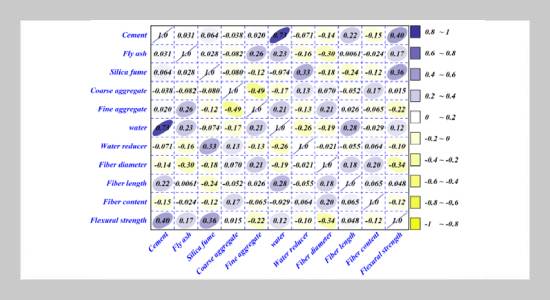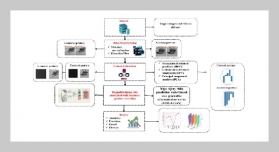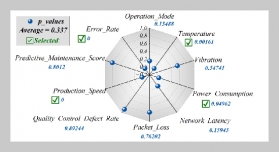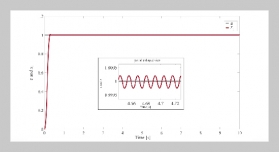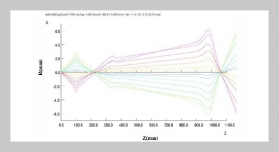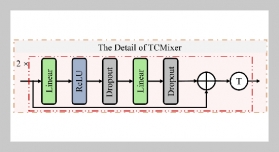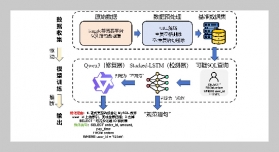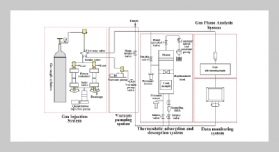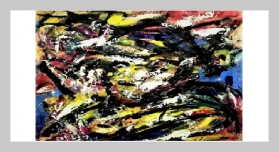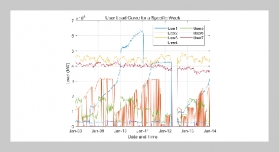- [1] G. Moradi, E. Hassankhani, and A. M. Halabian, (2022)“Experimentalandnumericalanalysesofburied box culverts in trenches using geofoam "Proceedings of the Institution of Civil Engineers-Geotechnical Engineering175:311–322. DOI:https: //doi.org/10.1680/jgeen.19.00288.
- [2] E. Hassankhani and M. Esmaeili-Falak, (2024) “Soil–structure interaction for buried conduits influenced by the coupled effect of the protective layer and trench in stallation "Journal of Pipeline Systems Engineering andPractice15: 04024012.DOI: https: //doi.org/10.1061/JPSEA2.PSENG-1547.
- [3] M. Esmaeili-Falak, H. Katebi, A. Javadi, and S. Rahimi,(2017)“Experimentalinvestigationofstressand strain characteristics of frozen sandy soils-A case study of Tabriz subway "Modares Civil Engineering journal 17:13–23.DOI: http://mcej.modares.ac.ir/article-16-7658-en.html.
- [4] C. Jiang, K. Fan, F. Wu, and D. Chen,(2014) “Experimental study on the mechanical properties and microstructure of chopped basaltfibrere in forced concrete "Materials Design58:187–193.DOI: https: //doi.org/10.1016/j.matdes.2014.01.056.
- [5] J. Gao, W. Sun, and K. Morino, (1997) “Mechanical properties of steel fiber-reinforced, high-strength, light weight concrete "Cement and Concrete Compos ites19:307–313.DOI: https: //doi.org/10.1016/S0958-9465(97)00023-1.
- [6] H. G. Mosavinejad, A. Saradar, and B. Tahmouresi, (2018)“Hoopstress-straininfiber reinforced cementitious composite thin-walled cylindrical shells "Journal ofMa terialsinCivilEngineering30:04018258.DOI:https: //doi.org/10.1061/(ASCE)MT.1943-5533.0002428.
- [7] A. Sadrmomtazi, J. Sobhani, andM. A. Mirgozar, (2013)“ModelingcompressivestrengthofEPS lightweight concrete using regression, neural network and ANFIS "Construction and Building Materials 42: 205–216. DOI: https: //doi.org/10.1016/j.conbuildmat.2013.01.016.
- [8] S. A. Hoor and M. Esmaeili-Falak,(2024)“Innovative Approaches for Mitigating Soil Lique faction:A State-of the-Art Review of Techniques and Bibliometric Analysis" IndianGeotechnicalJournal:1–28.DOI: https: //doi.org/10.1007/s40098-024-01120-3.
- [9] R. S. Benemaran, M. Esmaeili-Falak, and M. S. Kord lar,(2024)“Improvement of recycled aggregate concrete using glass fiber and silica fume "Multiscale and Multidisciplinary Modeling, Experiments and Design 7:1895–1914. DOI: https://doi.org/10.1007/s41939-023-00313-2.
- [10] Y. Zhu, L. Huang, Z. Zhang, and B. Bayrami, (2022) “Estimation of splitting tensile strength of modified recycled aggregate concrete using hybrid algorithms" Steel and Composite Structures, An International Journal 44: 389–406.
- [11] R. Liang and B. Bayrami, (2023) “Estimation of frost durability of recycled aggregate concrete by hybridized Random Forests algorithms" Steel and Composite Structures 49: 91–107. DOI: https: //doi.org/10.12989/scs.2023.49.1.091.
- [12] F. Almohammed, M. S. Thakur, D. Lee, R. Kumar, and T. Singh, (2024) “Flexural and split tensile strength of concrete with basalt fiber: An experimental and computational analysis" Construction and Building Mate rials 414: 134936. DOI: https: //doi.org/10.1016/j.conbuildmat.2024.134936.
- [13] V. Corinaldesi and G. Moriconi, (2015) “Use of syn thetic fibers in self-compacting lightweight aggregate concretes" Journal of building engineering 4: 247–254. DOI: https: //doi.org/10.1016/j.jobe.2015.10.006.
- [14] O. Kayali, M. N. Haque, and B. Zhu, (2003) “Some characteristics of high strength fiber reinforced lightweight aggregate concrete" Cement and concrete composites 25: 207–213. DOI: https: //doi.org/10.1016/S0958-9465(02)00016-1.
- [15] S. M. Abtahi, M. Sheikhzadeh, and S. M. Hejazi, (2010) “Fiber-reinforced asphalt-concrete–a review" Construction and Building Materials 24: 871–877. DOI: https: //doi.org/10.1016/j.conbuildmat.2009.11009.
- [16] M.Hassanpour,P.Shafigh,andH.B.Mahmud,(2012) “Lightweight aggregate concrete fiber reinforcement–A review" Construction and Building Materials 37: 452 461. DOI: https: //doi.org/10.1016/j.conbuildmat.2012.07.071.
- [17] E. Quagliarini, F. Monni, F. Bondioli, and S. Lenci, (2016) “Basalt fiber ropes and rods: Durability tests for their use in building engineering" Journal of Building Engineering 5: 142–150. DOI: https: //doi.org/10.1016/j.jobe.2015.12.003.
- [18] J. X. Ma, M. Zhang, and G. Zhao,(2013)“Experimental research on basalt fiber reinforced cementitious composites" Applied mechanics and materials 253: 533–536. DOI: https: //doi.org/10.4028/www.scientific.net/AMM.253-255.533.
- [19] R. Ralegaonkar, H. Gavali, P. Aswath, and S. Abolmaali, (2018) “Application of chopped basalt fibers in reinforced mortar: A review" Construction and Building Materials 164: 589–602. DOI: https: //doi.org/10.1016/j.conbuildmat.2017.12.245.
- [20] A. Mansoori, M. M. Moein, and E. Mohseni, (2021) “Effect of micro silica on fiber-reinforced self-compacting composites containing ceramic waste" Journal of Composite Materials 55: 95–107. DOI: https: //doi.org/10.1177/0021998320944570.
- [21] R. F. Zollo, (1997)“Fiber-reinforced concrete: an overview after 30 years of development" Cement and concrete composites 19: 107–122. DOI: https: //doi.org/10.1016/S0958-9465(96)00046-7.
- [22] S. P. Shah and B. V. Rangan. “Fiber reinforced concrete properties”. In: Journal Proceedings. 68. 1971, 126–137. DOI: 10.14359/11299.
- [23] M. Nili and V. Afroughsabet, (2010) “Combined effect of silica fume and steel fibers on the impact resistance and mechanical properties of concrete" International journal of impact engineering 37: 879–886. DOI: https://doi.org/10.1016/j.ijimpeng.2010.03.004.
- [24] X. Wang, J. He, A. S. Mosallam, C. Li, and H. Xin, (2019) “The effects of fiber length and volume on material properties and crack resistance of basalt fiber reinforced concrete (BFRC)" Advances in Materials Science and Engineering 2019: 7520549. DOI: https: //doi.org/10.1155/2019/7520549.
- [25] B. Chen and J. Liu, (2004) “Residual strength of hybrid fiber-reinforced high-strength concrete after exposure to high temperatures" Cement and Concrete Research 34: 1065–1069. DOI: https: //doi.org/10.1016/j.cemconres.2003.11.010.
- [26] P. Chindaprasirt and U. Rattanasak, (2011) “Shrinkage behavior of structural foam lightweight concrete containing glycol compounds and fly ash" Materials Design 32: 723–727. DOI: https: //doi.org/10.1016/j.matdes.2010.07.036.
- [27] M. Esmaeili-Falak and R. S. Benemaran, (2024) “Ensemble extreme gradient boosting based models to predict the bearing capacity of micropilegroup" Applied Ocean Research 151: 104149. DOI: https://doi.org/10.1016/j.apor.2024.104149.
- [28] Y. Dawei, Z. Bing, G. Bingbing, G. Xibo, and B. Razzaghzadeh, (2023) “Predicting the CPT-based pile set-up parameters using HHO-RF and PSO-RF hybrid models" Structural Engineering and Mechanics, An Int’l Journal 86: 673–686.
- [29] R. Derakhshani, M. Zaresefat, V. Nikpeyman, A. GhasemiNejad, S. Shafieibafti, A. Rashidi, M. Nemati, and A. Raoof, (2023) “Machine learning-based assessment of watershed morphometry in Makran" Land 12: 776. DOI: https: //doi.org/10.3390/land12040776.
- [30] B. M. Yaychi and M. Esmaeili-Falak, (2024) “Estimating axial bearing capacity of driven piles using tuned random forest frameworks" Geotechnical and Geological Engineering 42: 7813–7834. DOI: https: //doi.org/10.1007/s10706-024-02952-9.
- [31] M. Esmaeili-Falak, H. Katebi, M. Vadiati, and J. Adamowski, (2019) “Predicting triaxial compressive strength and Young’s modulus of frozen sand using artificial intelligence methods" Journal of Cold Regions Engineering 33: 04019007. DOI: https: //doi.org/10.1061/(ASCE)CR.1943-5495.0000188.
- [32] M. sadat Jalaee, A. Ghasemi Nejad, S. A. Jalaee, N. A. Zarin, and R. Derakhshani, (2022) “A novel hybrid arti ficial intelligence approach to the future of global coal con sumption using whale optimization algorithm and adaptive neuro-fuzzy inference system" Energies 15: 2578. DOI: https: //doi.org/10.3390/en15072578.
- [33] K. Zhang, Y. Zhang, and B. Razzaghzadeh, (2024) “Application of the optimal fuzzy-based system on bearing capacity of concrete pile" Steel and Composite Structures 51: 25–41. DOI: https: //doi.org/10.12989/scs.2024.51.1.025.
- [34] D. Li, X. Zhang, Q. Kang, and E. Tavakkol, (2023) “Estimation of unconfined compressive strength of marine clay modified with recycled tiles using hybridized extreme gradient boosting method" Construction and Building Materials 393: 131992. DOI: https: //doi.org/10.1016/j.conbuildmat.2023.131992.
- [35] Z. K. Motlagh, R. Derakhshani, and M. H. Sayadi, (2023) “Groundwater vulnerability assessment in central Iran: Integration of GIS-based DRASTIC model and a machine learning approach" Groundwater for Sustain able Development 23: 101037. DOI: https: //doi.org/10.1016/j.gsd.2023.101037.
- [36] M. Zaresefat and R. Derakhshani, (2023) “Revolutionizing groundwater management with hybrid AI models: Apractical review" Water 15: 1750. DOI: https://doi. org/10.3390/w15091750.
- [37] M. Zaresefat, R. Derakhshani, V. Nikpeyman, A. GhasemiNejad, and A. Raoof, (2023) “Using artifi cial intelligence to identify suitable artificial groundwater recharge areas for the Iranshahr basin" Water 15: 1182. DOI: https://doi.org/10.3390/w15061182.
- [38] M.Esmaeili-Falak and R. S. Benemaran, (2024) “Ap plication of optimization-based regression analysis for evaluation of frost durability of recycled aggregate concrete" Structural Concrete 25: 716–737. DOI: https: //doi.org/10.1002/suco.202300566.
- [39] H. Li, J. Lin, X. Lei, and T. Wei, (2022) “Compressive strength prediction of basalt fiber reinforced concrete via random forest algorithm" Materials Today Communications 30: 103117. DOI: https: //doi.org/10.1016/j.mtcomm.2021.103117.
- [40] J. Sobhani, M. Najimi, A. R. Pourkhorshidi, and T. Parhizkar, (2010) “Prediction of the compressive strength of no-slump concrete: A comparative study of regression, neural network and ANFIS models" Construction and Building Materials 24(5): 709–718.
- [41] A. Sadrmomtazi, J. Sobhani, and M. A. Mirgozar, (2013) “Modeling compressive strength of EPS lightweight concrete using regression, neural network and ANFIS" Construction and Building Materials 42: 205–216. DOI: https: //doi.org/10.1016/j.conbuildmat.2013.01.016.
- [42] M. Wang, (2022) “Mechanical Properties Dataset of BFRC for strength prediction with machine learning" Mendeley Data: DOI: 10.17632/b5s8ywwgwr.1.
- [43] V. Vapnik. The nature of statistical learning theory. Springer science business media, 2013.
- [44] C.-H. Wu, G.-H. Tzeng, and R.-H. Lin, (2009) “A Novel hybrid genetic algorithm for kernel function and parameter optimization in support vector regression" Ex pert Systems with applications 36: 4725–4735. DOI: https: //doi.org/10.1016/j.eswa.2008.06.046.
- [45] W. Lijuan and C. Guohua, (2016) “Seasonal SVR with FOA algorithm for single-step and multi-step ahead fore casting in monthly inbound tourist flow" Knowledge Based Systems 110: 157–166. DOI: https://doi.org/10.1016/j.knosys.2016.07.023.
- [46] P. Samui, D. Kim, and R. Viswanathan,(2015)“Spatial variability of rock depth using adaptive neuro-fuzzy inference system (ANFIS) and multivariate adaptive regression spline (MARS)" Environmental Earth Sciences 73: 4265–4272. DOI: https: //doi.org/10.1007/s12665-014-3711-x.
- [47] J.-S. Jang, (1993) “ANFIS: adaptive-network-based fuzzy inference system" IEEE transactions on systems, man, and cybernetics 23: 665–685. DOI: https: //doi.org/10.1109/21.256541.
- [48] S. Barak and S. S. Sadegh, (2016) “Forecasting energy consumption using ensemble ARIMA–ANFIS hybrid algorithm" International Journal of Electrical Power Energy Systems 82: 92–104. DOI: https: //doi.org/10.1016/j.ijepes.2016.03.012.
- [49] D.Połap and M. Wo´zniak,(2021)“Redfoxoptimization algorithm" Expert Systems with Applications 166: 114107. DOI: https: //doi.org/10.1016/j.eswa.2020.114107.
- [50] M. Zhang, Z. Xu, X. Lu, Y. Liu, Q. Xiao, and B. Taheri, (2021) “An optimal model identification for solid oxide fuel cell based on extreme learning machines optimized by improved Red Fox Optimization algorithm" International Journal of Hydrogen Energy 46: 28270–28281. DOI: https: //doi.org/10.1016/j.ijhydene.2021.06.046.
- [51] N. Jyothi and R. Patil, (2021) “An optimized deep learning-based trust mechanism In VANET for selfish node detection" International Journal of Pervasive Computing and Communications 18: 304–318. DOI: https: //doi.org/10.1108/IJPCC-09-2021-0239.
- [52] W. Kulasooriya, R. S. S. Ranasinghe, U. S. Perera, P. Thisovithan, I. U. Ekanayake, and D. P. P. Meddage, (2023) “Modeling strength characteristics of basalt fiber reinforced concrete using multiple explainable machine learning with a graphical user interface" Scientific Re ports 13: 13138. DOI: https: //doi.org/10.1038/s41598-023-40513-x.
